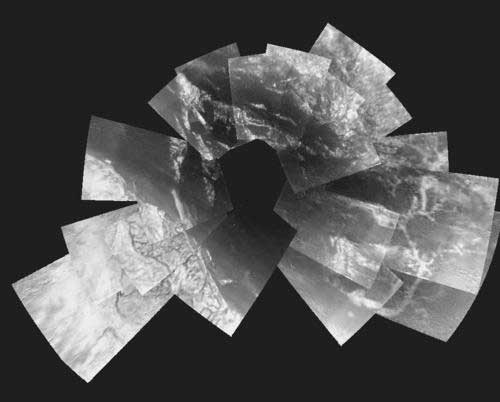This is according to an analysis conducted by the European Space Agency of the images of the last few meters before the landing

The approximately 300 photographs that managed to reach Titan continue to provide news even a few days after the operation itself ended. The European Huygens spacecraft, which successfully landed on Titan on Friday and transmitted from there for about an hour and a half beyond its scheduled time, landed on mud when it hit Titan's surface. This is what scientists said who revealed the images of the last meters of the landing on the Saturnian moon.
The latest images have increased scientists' belief that Huygens landed near a large body of water as it completed a seven-year journey to the previously unexplored moon.
Another possibility is that Huygens passed through hydrocarbon vapors above the surface and these were collected by the camera lens.
Another series of images showed how the hazy atmosphere gave way to a firmer but varied ground clearly descending and swirling towards its final resting place. "There was not a single malfunction during the landing. This landing was much friendlier than we expected" says Charles C, a scientist who studied the images.
The images from the parachute, from a height of about 20 kilometers to the ground, raise the possibility of the presence of a liquid, which almost certainly flowed through the canals or flooded large areas. says Marty Tomasco of the Lunar and Planetary Laboratory at the University of Arizona in Tucson.
The scientists theorized that the spacecraft would emerge from the fog when it descended below an altitude of 70 to 50 kilometers. In fact, Huygens only began to break free from the nebula at a height of 30 kilometers above the surface.
When the spaceship landed, it didn't make a thump or splash of liquid splashing, but a kind of sound of touching a board - it landed on titanic mud.
"I believe that the biggest surprise is that the spacecraft survived the landing and continued to operate afterwards, said C.
The images taken by the camera on the descent showed that the lenses had picked up some material, indicating that the spacecraft had gone slightly into the ground. "Or we passed through hydrocarbon vapors that collected on the lenses." said.
The spacecraft's parachute disappeared from the site when it landed, so it's almost certain that the spacecraft is not pointing east, otherwise we would have seen the parachute, says crew member Mike Boshore. Bushroe.
When the mission was planned, it was decided that a 20 watt lamp would begin to illuminate at an altitude of 700 meters and would continue to illuminate the landing site for 15 minutes after contact with the ground. In fact, not only did the lamp turn on at exactly 700 meters, but it also continued to burn for over an hour later, as Cassini continued beyond Titan's horizon, and the operation was over.
Titan is the first moon after Earth's moon to be explored by a spacecraft that also landed on its surface. The scientists believe that its atmosphere may be similar to that of early Earth and research may provide clues to the question of how life originated.
